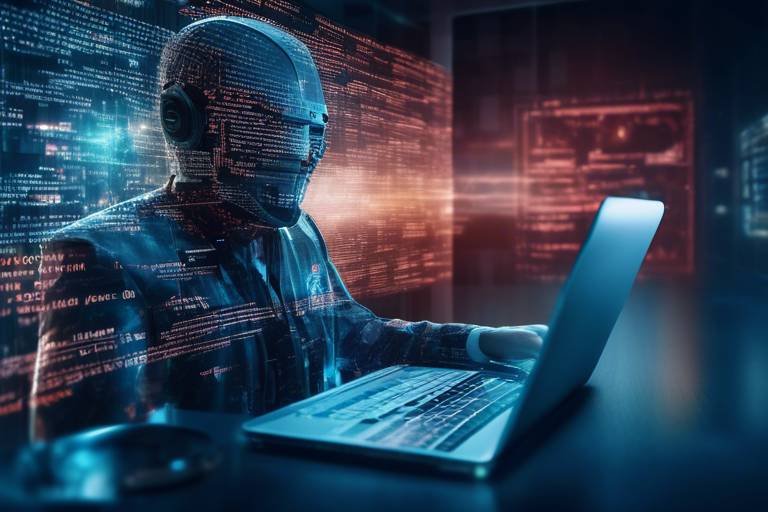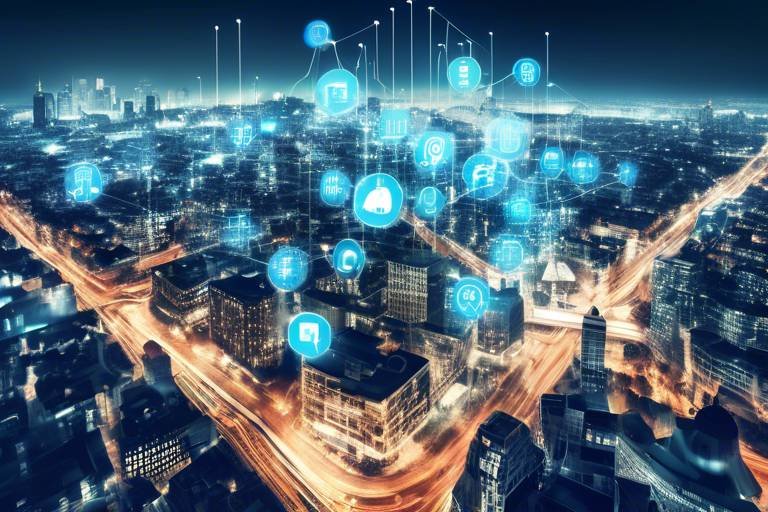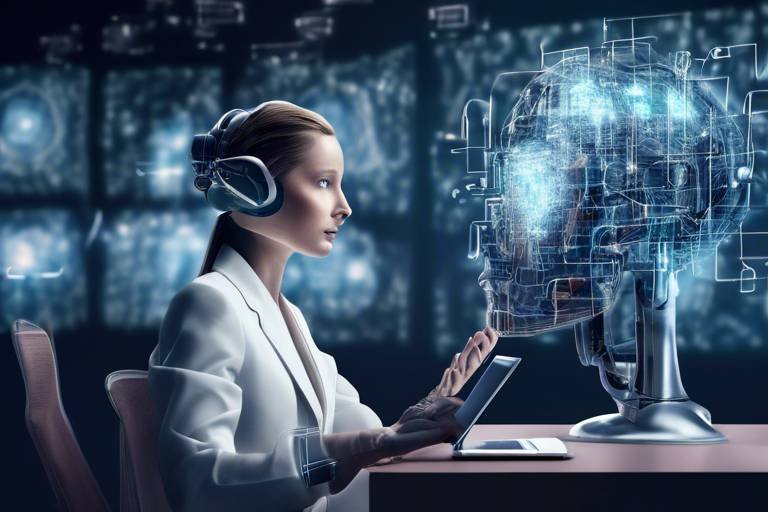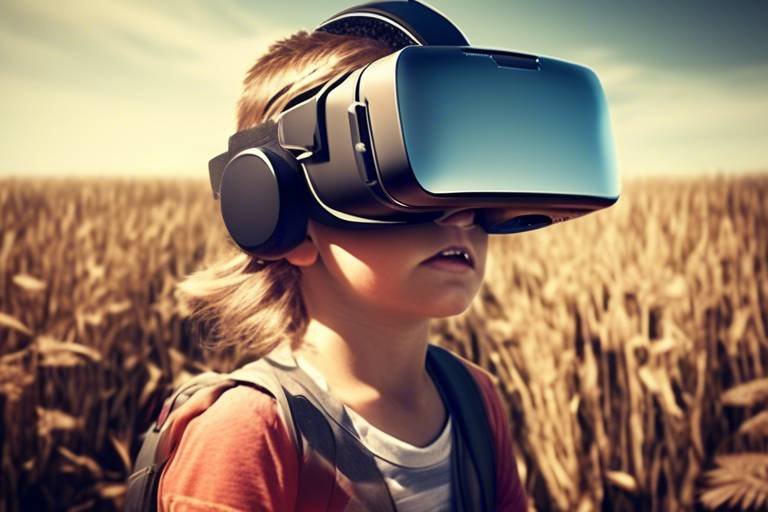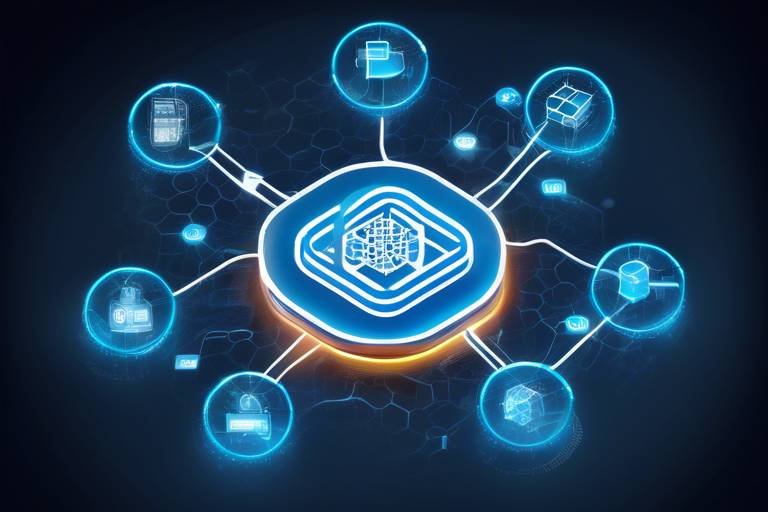Deepfakes: Unleashing the Dark Side of AI
In recent years, the term deepfake has become a buzzword, often associated with the darker corners of technology. But what exactly are deepfakes, and why should we care? At their core, deepfakes are a form of synthetic media that utilize artificial intelligence to create realistic-looking audio and video manipulations. Imagine watching a video of a public figure saying something outrageous, only to find out later that it was all fabricated. This is the power—and peril—of deepfakes.
The technology behind deepfakes has evolved rapidly, making it easier for anyone with a computer to create convincing fake content. But while the technology itself can be fascinating, the implications it carries for society are far from amusing. With the rise of deepfakes, we are entering a new era where trust in media is being challenged like never before. The very fabric of our information ecosystem is at stake, and it’s crucial that we understand the potential consequences of this innovation.
As we dive deeper into this topic, we’ll explore not only the mechanics of deepfake technology but also the ethical dilemmas it presents. From the potential for misinformation to issues of consent and privacy, the ramifications are extensive. So, buckle up as we navigate through the complexities of deepfakes and their impact on our digital lives. It’s a wild ride, and one that demands our attention and critical thinking.
Deepfakes are the result of a combination of advanced algorithms and vast amounts of data. Using a technique known as deep learning, AI systems can analyze countless images and videos to create realistic representations of people. This technology has made it possible to manipulate audio and video to such a degree that it can be nearly impossible to discern what is real and what is fake. The rapid evolution of this technology has left many in the dust, trying to catch up with the implications it brings.
With great power comes great responsibility, and the rise of deepfakes raises a plethora of ethical concerns. One of the most pressing issues is the potential for misinformation. When deepfakes are used to spread false information, they can have real-world consequences, influencing public opinion and even swaying elections. Additionally, the issue of consent comes into play: many deepfakes are created without the knowledge or permission of the individuals involved. This raises serious questions about privacy and the right to control one’s own image.
As deepfakes become more prevalent, they threaten to erode public trust in media and information sources. The ability to manipulate content so convincingly means that people may start to question the authenticity of everything they see online. This skepticism can have a ripple effect, undermining journalism and public discourse. If we can’t trust what we see, how can we make informed decisions? This is a challenge that society must confront head-on.
Deepfakes have the potential to be weaponized in politics, creating a dangerous landscape where misinformation can spread like wildfire. For instance, there have been instances where deepfake videos were used to mislead voters or damage the reputation of political opponents. The implications are staggering: elections could be swayed, and public opinion could be manipulated, all through the power of a well-crafted deepfake.
Social media platforms are grappling with the challenge of deepfake content. As these platforms become the primary source of information for millions, the responsibility to combat misinformation falls heavily on their shoulders. Many companies are investing in technologies to identify and flag deepfake content, but the rapid pace of AI evolution makes it a constant uphill battle. How can we ensure that social media remains a trustworthy space for information?
The legal landscape surrounding deepfakes is still evolving, and there are significant gaps that need to be addressed. Current laws often struggle to keep up with the pace of technological advancements, leaving individuals vulnerable to misuse. As society grapples with these challenges, there is a pressing need for reforms that protect individuals from the potential harms of deepfake technology.
As deepfake technology advances, so too do the methods for detecting them. Researchers and tech companies are developing tools that leverage AI and machine learning to identify manipulated content. However, this is no easy feat. The challenge lies in the fact that as detection methods improve, so do the techniques used to create deepfakes. It’s a never-ending game of cat and mouse.
Innovations in AI and machine learning are crucial for the detection of deepfakes. Recent advancements have led to the development of algorithms that can analyze subtle inconsistencies in videos, such as unnatural facial movements or audio mismatches. While these tools are promising, they are not foolproof, and the cat-and-mouse game continues between creators and detectors of deepfakes.
Raising public awareness about deepfakes is essential for combating misinformation. Educational initiatives aimed at helping individuals recognize and critically evaluate deepfake content are vital. By equipping people with the knowledge to discern reality from fabrication, we can foster a more informed society. After all, in a world where seeing is no longer believing, knowledge becomes our greatest ally.
- What are deepfakes? Deepfakes are AI-generated synthetic media that manipulate audio and video to create realistic but fake content.
- How are deepfakes created? They are created using deep learning algorithms that analyze vast amounts of data to generate convincing representations.
- What are the ethical concerns surrounding deepfakes? Key concerns include misinformation, consent, and privacy violations.
- How can we detect deepfakes? Detection methods involve AI and machine learning algorithms that identify inconsistencies in manipulated content.
- What can be done to combat deepfakes? Raising public awareness and developing legal frameworks are essential steps in addressing the challenges posed by deepfakes.

Understanding Deepfakes
Deepfakes are a fascinating yet alarming manifestation of artificial intelligence (AI) technology. At their core, deepfakes involve the use of machine learning algorithms to create highly realistic audio and video content that can convincingly depict individuals saying or doing things they never actually did. Imagine watching a video of your favorite celebrity endorsing a product they’ve never even heard of—this is the power and peril of deepfake technology.
The term “deepfake” itself is a portmanteau of “deep learning” and “fake,” highlighting the underlying technology that enables such creations. Deep learning, a subset of machine learning, utilizes neural networks to analyze vast amounts of data, learning patterns and generating content that mimics real human expressions and speech. This technology has evolved rapidly, making it increasingly difficult for the average person to discern between genuine and manipulated media.
To better understand how deepfakes work, we can break down the process into a few key components:
- Data Collection: The first step involves gathering large datasets of images, videos, and audio recordings of the target individual. This data serves as the foundation for training the AI model.
- Training the Model: Once enough data is collected, the AI model undergoes training, where it learns to replicate the target's facial expressions, voice, and mannerisms. This is where the magic happens, as the model begins to understand how to generate new content that looks and sounds like the real person.
- Generating Content: After training, the model can create new videos or audio clips that convincingly mimic the target individual, effectively producing deepfake content.
As deepfake technology continues to advance, it becomes increasingly accessible. Initially, creating a deepfake required specialized knowledge and expensive software, but today, there are user-friendly applications available that allow almost anyone to produce deepfake content with just a few clicks. This democratization of technology raises significant concerns about its potential misuse.
Moreover, the rapid evolution of deepfakes poses challenges not only for individuals but also for society at large. As we become more accustomed to seeing manipulated content, the line between reality and fabrication blurs. This can lead to a dangerous landscape where misinformation spreads like wildfire, and trust in media erodes. The implications are profound, affecting everything from personal relationships to national security.
In summary, understanding deepfakes is crucial in today’s digital landscape. As this technology continues to evolve, it presents both exciting possibilities and daunting challenges. Awareness and education are vital in navigating this complex terrain, ensuring that individuals are equipped to discern reality from deception in an age where seeing is no longer believing.

Ethical Concerns
The rise of deepfake technology has unleashed a whirlwind of ethical concerns that society must grapple with. At its core, the creation of deepfakes raises fundamental questions about misinformation, consent, and privacy. Imagine waking up one day to find a video of yourself saying something you never uttered, or worse, being portrayed in a compromising situation. This is not just a nightmare scenario; it is a reality that many individuals face as deepfake technology evolves.
One of the most pressing ethical dilemmas is the potential for deepfakes to spread misinformation. In an age where information travels faster than the speed of light, deepfakes can easily mislead the public, creating a ripple effect that can influence opinions and behaviors. For instance, a deepfake video of a public figure making incendiary comments could incite unrest or alter the course of a political campaign. The implications are staggering, and the responsibility for discerning truth from fiction falls on the shoulders of the viewer.
Moreover, the issue of consent cannot be overlooked. The creation of deepfakes often involves using someone’s likeness without their permission, which raises serious questions about personal autonomy. Are we okay with the idea that our faces and voices can be manipulated at will? This lack of control over one's own image can lead to severe emotional distress and reputational damage. Imagine a world where anyone can create a deepfake of you, portraying you in a light you never intended. It’s a violation of not just privacy, but also of personal identity.
Privacy violations are another significant concern. As deepfake technology becomes more accessible, the potential for abuse increases exponentially. Individuals can find themselves at the mercy of malicious actors who may create deepfakes for harassment or blackmail. The anonymity of the internet complicates matters further, making it difficult to hold perpetrators accountable. In this context, the ethical implications extend beyond the individual to societal norms regarding privacy and respect.
To illustrate the ethical landscape of deepfakes, consider the following table that highlights key ethical concerns and their implications:
| Ethical Concern | Description | Implications |
|---|---|---|
| Misinformation | Spread of false information through manipulated media | Influences public opinion, undermines trust |
| Consent | Using someone's likeness without permission | Violates personal autonomy, causes emotional distress |
| Privacy Violations | Manipulation of personal images for malicious purposes | Harassment, blackmail, and reputational damage |
In conclusion, while deepfake technology showcases the incredible advancements in artificial intelligence, it also presents a plethora of ethical concerns that we must address. As we navigate this digital landscape, it is crucial to foster a culture of awareness and responsibility. The conversations surrounding deepfakes are not just about technology; they are about our values, our rights, and the very essence of what it means to be a part of a digital society.
- What are deepfakes? Deepfakes are AI-generated synthetic media that can manipulate audio and video, making it appear as though individuals said or did something they didn't.
- Why are deepfakes a concern? They pose risks of misinformation, violate consent and privacy, and can lead to significant societal implications.
- How can we detect deepfakes? Detection methods are evolving, with innovations in AI and machine learning playing a crucial role in identifying manipulated content.
- What can be done to combat deepfakes? Raising public awareness and implementing stricter regulations are essential steps in addressing the challenges posed by deepfake technology.

Impact on Trust
The emergence of deepfakes has thrown a wrench into the machinery of trust that holds our society together. In a world where seeing is believing, the ability to manipulate video and audio content raises a crucial question: how can we trust what we see? Deepfakes can create a reality where individuals are portrayed saying or doing things they never actually did, leading to a significant erosion of public trust in media and information sources. Imagine watching a news clip of a politician making outrageous statements, only to later find out it was a fabricated deepfake. The implications are staggering.
As deepfakes proliferate, they challenge our perception of truth. The average person might struggle to distinguish between authentic content and cleverly crafted fabrications. This uncertainty can lead to a pervasive skepticism towards all media, where individuals begin to question the validity of even genuine reports. It's akin to the boy who cried wolf; once trust is lost, it can be incredibly difficult to regain. In fact, a recent study found that over 60% of respondents expressed doubt about the authenticity of videos they encounter online. This growing mistrust can have dire consequences for journalism, public discourse, and even interpersonal relationships.
Furthermore, the impact of deepfakes extends beyond individual skepticism; it can also influence collective perceptions. When deepfakes are used to spread misinformation, they can create a ripple effect, shaping public opinion and altering the course of discussions on critical issues. For instance, a deepfake video of a public figure could incite outrage, leading to protests or calls for action based on false premises. The potential for manipulation is vast and alarming.
To illustrate the gravity of the situation, consider the following table that highlights some of the key consequences of deepfakes on trust:
| Consequence | Description |
|---|---|
| Erosion of Trust | Deepfakes lead to skepticism about all forms of media, making it hard to discern truth from fiction. |
| Manipulation of Public Opinion | False narratives can be crafted, influencing collective beliefs and actions. |
| Threat to Journalism | Media outlets may struggle to maintain credibility as audiences become more doubtful of their content. |
| Interpersonal Distrust | Personal relationships may suffer as individuals question the authenticity of shared videos or messages. |
As we navigate this uncharted territory, it becomes increasingly vital for individuals to develop a discerning eye. Critical thinking skills are more important than ever, as we must learn to question the authenticity of the content we consume daily. In a sense, we are all now detectives in the digital age, tasked with sifting through layers of deception to uncover the truth. The responsibility to verify information rests not only on media creators but also on consumers. So, the next time you come across a sensational video, take a moment to pause and reflect: could this be a deepfake?
- What are deepfakes? Deepfakes are AI-generated synthetic media that manipulate audio and video to create realistic but false representations of people.
- How do deepfakes affect trust? They can erode public trust in media, making it difficult to distinguish between real and manipulated content.
- What can be done to combat deepfakes? Raising awareness, developing detection technologies, and fostering critical thinking skills are essential steps in combating the spread of deepfakes.

Political Ramifications
The advent of deepfake technology has brought about a significant shift in the political landscape, posing threats that many had previously only imagined in dystopian fiction. Imagine waking up to a video of a political leader making incendiary remarks, only to discover later that it was entirely fabricated. This is not just a hypothetical scenario; it's a real danger that has already manifested in various forms across the globe. Deepfakes can be weaponized to mislead voters, manipulate public perception, and even destabilize governments.
One of the most alarming aspects of deepfakes in politics is their potential to disrupt democratic processes. For instance, during election cycles, a well-timed deepfake could sway undecided voters by presenting a distorted view of a candidate. This manipulation can be particularly potent when it comes to sensitive issues such as national security or social justice. A deepfake video that appears to show a candidate endorsing violence or hate can lead to a rapid spread of misinformation, which is difficult to counteract once it gains traction.
Moreover, deepfakes can exacerbate existing polarization within political discourse. When individuals encounter fake content that aligns with their pre-existing beliefs, they are more likely to accept it as truth without questioning its authenticity. This confirmation bias can create echo chambers where misinformation flourishes, further entrenching divisions among the electorate. As trust in traditional media declines, the public may find it increasingly challenging to discern fact from fiction, leading to a dangerous cycle of misinformation.
To illustrate the impact of deepfakes on politics, consider the following examples:
| Event | Description | Outcome |
|---|---|---|
| 2018 Midterm Elections | Deepfake videos surfaced that misrepresented candidates' statements. | Increased voter confusion and mistrust in candidates. |
| International Relations | Deepfakes were used to create false narratives about foreign leaders. | Heightened tensions and potential diplomatic crises. |
As we navigate this new political terrain, the need for robust media literacy becomes more critical than ever. Citizens must be equipped with the tools to critically evaluate the content they consume. It’s essential for individuals to question the authenticity of sensational claims and seek out reliable sources before forming opinions based on potentially manipulated media. The responsibility doesn't lie solely with the public; social media platforms and governments also have a role to play in combating the spread of deepfake content.
In conclusion, the political ramifications of deepfakes are profound and far-reaching. As this technology continues to evolve, it will undoubtedly challenge the very foundations of democratic engagement. To safeguard the integrity of political discourse, we must remain vigilant, informed, and proactive in addressing the threats posed by deepfakes.
- What are deepfakes? Deepfakes are AI-generated synthetic media that manipulate audio and video to create realistic but false representations of individuals.
- How can deepfakes impact politics? They can mislead voters, manipulate public perception, and undermine trust in democratic processes.
- What measures can be taken to combat deepfakes? Increasing media literacy, employing detection technologies, and implementing stricter regulations are crucial steps.
- Are there any laws against deepfakes? The legal landscape is still evolving, with some jurisdictions beginning to introduce regulations to address deepfake creation and distribution.

Social Media Challenges
Social media platforms are at the forefront of the deepfake dilemma, grappling with the rapid proliferation of manipulated content that can deceive users and distort reality. These platforms, designed to foster connection and communication, now face the daunting task of policing a digital landscape rife with misinformation and malicious intent. Imagine scrolling through your feed and coming across a video of a public figure making shocking statements. At first glance, it seems legitimate, but what if it’s a deepfake? This scenario underscores the critical challenge social media faces: how to maintain trust while allowing for the free exchange of ideas.
One of the primary challenges is the sheer volume of content uploaded every minute. With millions of videos, images, and posts shared across platforms like Facebook, Twitter, and Instagram, detecting deepfakes becomes an overwhelming task. The speed at which these platforms operate often leaves little room for thorough vetting. In fact, reports indicate that approximately 500 hours of video are uploaded to YouTube every minute, making it nearly impossible to scrutinize every piece of content for authenticity. As a result, deepfakes can spread like wildfire, causing damage before they are identified and removed.
Moreover, the algorithms that govern social media feeds are often designed to prioritize engagement over accuracy. This means that sensational or controversial content, including deepfakes, is more likely to be promoted, regardless of its truthfulness. Users may unwittingly share these deceptive videos, amplifying their reach and impact. In a world where clicks and likes often outweigh factual accuracy, the challenge of combating deepfakes becomes even more complex.
To address these challenges, social media companies are implementing various measures. For instance, platforms like Facebook and Twitter are investing in advanced technologies and partnerships with fact-checking organizations to identify and label misleading content. However, these efforts are still in their infancy and face significant hurdles. The evolving nature of deepfake technology means that detection methods must continuously adapt. As AI becomes more sophisticated, so too do the techniques used to create deepfakes, leading to a perpetual game of cat and mouse.
Additionally, user education plays a vital role in combating the spread of deepfakes. Social media platforms are increasingly recognizing the need to inform users about the potential for manipulated content. Campaigns aimed at raising awareness about deepfakes and teaching users how to critically evaluate the media they consume are essential. By empowering users with knowledge, platforms can foster a more discerning audience that is less susceptible to manipulation.
In conclusion, the challenges posed by deepfakes on social media are significant and multifaceted. As technology continues to advance, so too must the strategies employed by platforms to safeguard their users. The battle against deepfakes is not just about technology; it’s about restoring trust in digital communication and ensuring that social media remains a space for genuine connection and discourse.
- What are deepfakes? Deepfakes are synthetic media created using artificial intelligence that can manipulate audio and video to make it appear as if someone said or did something they did not.
- How do deepfakes impact society? Deepfakes can lead to misinformation, privacy violations, and erosion of trust in media, which can have serious implications for public discourse and democracy.
- What measures are social media platforms taking against deepfakes? Platforms are investing in detection technologies, collaborating with fact-checkers, and educating users about the risks of deepfakes.
- Can deepfakes be detected? Yes, there are emerging technologies and tools designed to detect deepfakes, though the rapid evolution of the technology presents ongoing challenges.
- How can I protect myself from deepfakes? Stay informed about deepfake technology, critically evaluate the media you consume, and verify information before sharing it.

Legal Implications
The rapid rise of deepfake technology has outpaced the development of legal frameworks designed to address its implications. As society grapples with the ethical dilemmas posed by these AI-generated manipulations, the law finds itself in a precarious position. Current legislation often struggles to keep up with the pace of technological advancement, leaving significant gaps in protections for individuals and society at large. For instance, while many countries have laws against defamation and fraud, these traditional legal tools may not adequately address the unique challenges posed by deepfakes, which can blur the lines between reality and fiction.
One of the primary legal concerns surrounding deepfakes is consent. In many cases, individuals may find their likeness used in deepfake videos without their permission, raising questions about their rights to privacy and control over their own image. This lack of consent can lead to serious reputational damage, especially if the content is malicious or misleading. Furthermore, the implications of deepfakes extend into the realm of intellectual property, as creators of original content may find their works manipulated without authorization, leading to potential copyright infringements.
In response to these challenges, some jurisdictions have begun to draft specific laws targeting deepfake technology. For example, California passed a law that makes it illegal to create deepfake content with the intent to harm or defraud others. However, such laws are still in their infancy, and many countries lack comprehensive regulations. This inconsistency creates a patchwork of legal standards that can be confusing and ineffective. It is crucial for lawmakers to consider the following key areas when developing legislation:
- Defamation and Misinformation: How can existing laws be adapted to address the unique nature of deepfakes?
- Privacy Rights: What protections can be enacted to safeguard individuals from unauthorized use of their likeness?
- Intellectual Property: How can creators be protected against unauthorized manipulation of their original works?
Moreover, the legal landscape surrounding deepfakes is complicated by the global nature of the internet. A deepfake created in one country can quickly spread to another, complicating jurisdictional issues. As a result, international cooperation and harmonization of laws may be necessary to effectively combat the misuse of this technology.
Ultimately, addressing the legal implications of deepfakes requires a multifaceted approach. Lawmakers must engage with technology experts, ethicists, and the public to craft legislation that not only protects individuals but also fosters innovation and freedom of expression. As we continue to navigate this complex terrain, the importance of dialogue and education around deepfakes cannot be overstated. Only through collective awareness and proactive measures can we hope to mitigate the potential harms of this powerful technology.
Q1: What are deepfakes?
A deepfake is a type of synthetic media where a person in an existing image or video is replaced with someone else's likeness, often using artificial intelligence.
Q2: Are deepfakes illegal?
The legality of deepfakes varies by jurisdiction. While some regions have laws addressing malicious deepfakes, many places still lack specific regulations.
Q3: How can I protect myself from deepfake misuse?
Being aware of deepfake technology and monitoring your online presence can help. Additionally, advocating for stronger privacy laws can empower individuals.
Q4: Can deepfakes be used for positive purposes?
Yes, deepfakes can be used in entertainment, education, and art. However, the potential for misuse remains a significant concern.

Detecting Deepfakes
As deepfake technology becomes increasingly sophisticated, the challenge of detecting these manipulated media forms has grown exponentially. Just like a magician performing tricks, deepfakes can deceive even the most discerning eye, making it crucial for individuals and organizations to develop robust detection methods. The arms race between deepfake creation and detection is akin to a never-ending game of cat and mouse, where both sides continuously innovate to stay ahead.
Detecting deepfakes involves a combination of technological advancements and human vigilance. Researchers are tirelessly working on algorithms that can analyze video and audio files for inconsistencies, such as unnatural facial movements or audio mismatches. For instance, one technique involves examining the frame-by-frame analysis of videos to identify subtle artifacts that may indicate manipulation. These artifacts can be as tiny as a pixel difference that the naked eye might miss but can be crucial in determining authenticity.
Another promising approach is the use of machine learning models, which are trained on vast datasets of both real and deepfake content. These models learn to recognize patterns and anomalies that distinguish genuine media from fake. However, the challenge lies in keeping these models updated as deepfake technology evolves. Just as a seasoned detective relies on experience and intuition, detection tools must be continuously refined to adapt to new techniques used by deepfake creators.
To give you a clearer picture of the current landscape of deepfake detection technologies, here’s a brief overview:
| Detection Method | Description | Effectiveness |
|---|---|---|
| Frame Analysis | Examines individual frames for inconsistencies. | Moderate; effective against older deepfakes. |
| Machine Learning | Uses algorithms to identify patterns in data. | High; continually improves with more data. |
| Blockchain Verification | Utilizes blockchain to authenticate original content. | Emerging; potential for high reliability. |
Moreover, public awareness plays a critical role in combating deepfakes. As the saying goes, "knowledge is power." By educating individuals about the existence and implications of deepfakes, we can empower them to critically evaluate the content they consume. This can involve initiatives in schools, community programs, and online resources aimed at teaching people how to recognize the signs of manipulated media.
In summary, while the race to detect deepfakes is challenging, it is not insurmountable. With technological advancements, public education, and a collaborative effort from tech companies, researchers, and the general public, we can create a more informed society that is better equipped to handle the complexities of deepfake content. As we continue to navigate this digital landscape, staying vigilant and informed is our best defense against the deceptive allure of deepfakes.
- What are deepfakes? Deepfakes are AI-generated synthetic media that manipulate audio and video to make it appear as though individuals said or did something they didn't.
- How can I detect a deepfake? You can look for inconsistencies in facial movements, audio mismatches, or use specialized detection tools that analyze media for signs of manipulation.
- Are deepfakes illegal? The legality of deepfakes varies by jurisdiction, but many places are beginning to implement laws to address issues of consent and misinformation.
- What should I do if I encounter a deepfake? Report it to the platform where you found it and verify the information through reliable sources before sharing.

Technological Solutions
The battle against deepfakes is as much about technology as it is about awareness. As the sophistication of deepfake creation tools continues to grow, so too must our arsenal of detection methods. Fortunately, advancements in artificial intelligence and machine learning are paving the way for innovative solutions that can help identify manipulated content effectively. One of the most promising approaches involves the use of neural networks, which are designed to analyze patterns in video and audio data. These networks can be trained to spot inconsistencies that are often invisible to the naked eye, such as unnatural facial movements or irregular audio synchronization.
Moreover, researchers are developing deepfake detection algorithms that can scrutinize the minute details of a video, such as pixel-level discrepancies and lighting inconsistencies. For instance, a deepfake might struggle to accurately replicate the way light reflects off a person's skin or how shadows move across their face. By focusing on these subtle cues, detection algorithms can achieve a higher accuracy rate in identifying deepfakes.
In addition to these technological solutions, collaboration among tech companies, academic institutions, and governments is crucial. By pooling resources and expertise, stakeholders can create a comprehensive framework for deepfake detection and regulation. For example, initiatives like the Deepfake Detection Challenge have encouraged developers to create more effective algorithms by providing a platform for testing and comparison. This collaborative spirit is essential for staying one step ahead in the ongoing arms race against deepfake technology.
While technology is advancing, it's also vital to consider the role of public awareness. Many individuals are still unaware of the existence and implications of deepfakes. Educational initiatives can empower people to critically evaluate the media they consume, making them less susceptible to misinformation. Workshops, online courses, and informational campaigns can significantly enhance public understanding of how to spot deepfakes and the potential consequences of sharing them.
In summary, while deepfake technology poses significant challenges, the development of robust detection methods and public education can help mitigate its impact. As we continue to innovate and adapt, the goal should be to create a safer digital environment where misinformation is less likely to thrive.
- What are deepfakes? Deepfakes are AI-generated synthetic media that manipulate audio and video to make it seem like someone said or did something they didn't.
- How can deepfakes impact society? They can erode trust in media, lead to misinformation, and even have political ramifications.
- What technologies are used to detect deepfakes? Advanced neural networks and deepfake detection algorithms analyze inconsistencies in video and audio data.
- What can individuals do to protect themselves from deepfakes? Raising awareness and educating oneself about deepfakes can help in critically evaluating media content.

Public Awareness and Education
In a world where deepfakes are becoming increasingly sophisticated and prevalent, the importance of public awareness and education cannot be overstated. As individuals, we often consume media without questioning its authenticity, which can lead to the spread of misinformation. Just like we wouldn’t blindly trust a stranger’s word without some verification, we must apply the same scrutiny to the content we encounter online. But how can we effectively educate ourselves and others about the dangers of deepfakes?
First and foremost, it’s essential to understand that awareness begins with knowledge. Educational initiatives aimed at informing the public about deepfakes are crucial. Schools, universities, and community organizations can play a pivotal role by integrating media literacy into their curriculums. This means teaching individuals not just to consume media, but to critically evaluate it. For example, a simple workshop could cover:
- The basics of how deepfakes are created.
- Real-world examples of deepfakes and their implications.
- Techniques for identifying manipulated content.
Moreover, it’s vital to leverage technology in this educational effort. Various online platforms and social media networks are beginning to implement tools that help users identify deepfake content. For instance, some platforms are developing algorithms that flag suspicious videos or images before they go viral. However, technology alone isn’t enough; we need to empower the public to use these tools effectively. This involves providing clear instructions and resources on how to utilize these detection tools.
Additionally, we must encourage open discussions about deepfakes in public forums. Community events, webinars, and even social media campaigns can serve as platforms for sharing knowledge and experiences related to deepfakes. By fostering a culture of transparency and dialogue, we can help individuals feel more confident in questioning the authenticity of the content they encounter. After all, a well-informed public is our best defense against the manipulation of information.
Finally, it’s crucial to recognize that combating deepfakes is a collective effort. Governments, tech companies, educators, and individuals all have a role to play. By working together, we can create a more informed society that is resilient against the threats posed by deepfakes. As we navigate this digital landscape, let’s commit to being vigilant and proactive in our media consumption habits. Remember, knowledge is power, and in the age of deepfakes, it’s our best weapon against misinformation.
1. What are deepfakes?
Deepfakes are AI-generated synthetic media that manipulate audio and video to create realistic-looking content, making it appear as though individuals said or did something they didn’t.
2. How can I identify a deepfake?
Look for inconsistencies in facial movements, unnatural blinking, or audio that doesn’t match the lip movements. Additionally, there are emerging tools and software designed to help detect deepfakes.
3. Why is public awareness important?
Public awareness is crucial because it empowers individuals to critically evaluate the media they consume, helping to prevent the spread of misinformation and protecting personal privacy.
4. What can I do to educate myself about deepfakes?
Engage with educational resources, attend workshops, follow credible news sources, and participate in discussions about media literacy to enhance your understanding of deepfakes.
Frequently Asked Questions
- What are deepfakes?
Deepfakes are AI-generated synthetic media that can manipulate audio and video, making it appear as though individuals said or did something they didn't. This technology uses advanced algorithms to create realistic but fabricated content.
- How are deepfakes created?
Deepfakes are created using machine learning techniques, particularly generative adversarial networks (GANs). These networks consist of two neural networks that work against each other to produce highly realistic images and videos by learning from existing data.
- What are the ethical concerns surrounding deepfakes?
The rise of deepfake technology raises significant ethical issues, including misinformation, consent, and privacy violations. These concerns emphasize the moral implications of creating and sharing deepfakes, especially in sensitive contexts.
- How do deepfakes impact public trust?
Deepfakes can erode public trust in media and information sources. As manipulated content becomes more prevalent, it becomes increasingly difficult for individuals to discern what is real, leading to skepticism towards genuine news and information.
- Can deepfakes influence political outcomes?
Yes, deepfakes can be weaponized in politics to mislead voters or undermine opponents. There have been instances where deepfakes have been used to distort the truth during elections, impacting public opinion and electoral integrity.
- What measures are social media platforms taking against deepfakes?
Social media platforms are implementing various measures to identify and mitigate the spread of deepfake content. These include using AI detection tools, flagging suspicious posts, and educating users about the potential dangers of manipulated media.
- Are there laws regulating deepfakes?
The legal landscape surrounding deepfakes is still evolving. While some jurisdictions have started to introduce laws addressing the creation and distribution of deepfakes, gaps remain, highlighting the need for reforms to protect individuals from misuse.
- How can deepfakes be detected?
Detecting deepfakes involves using advanced AI and machine learning tools designed to identify inconsistencies and artifacts in manipulated content. As deepfake technology evolves, detection methods must also advance to keep pace with these changes.
- What initiatives are in place to raise public awareness about deepfakes?
Educational initiatives are essential for raising public awareness about deepfakes. Programs aimed at helping individuals recognize and critically evaluate deepfake content are being developed to combat misinformation and promote media literacy.


